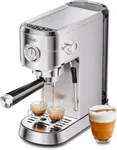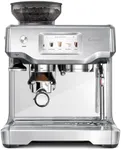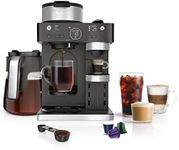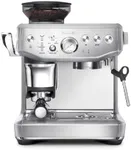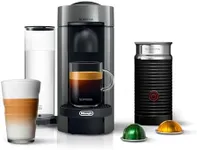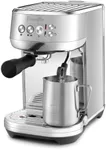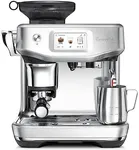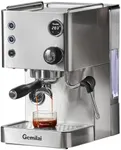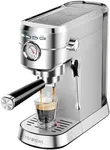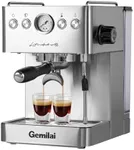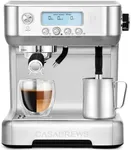Buying Guide for the Best Inexpensive Espresso Machines
Choosing an inexpensive espresso machine can be a bit overwhelming, but with the right approach, you can find a model that suits your needs without breaking the bank. The key is to understand the essential features and how they impact your coffee-making experience. By focusing on these key specifications, you can make an informed decision and enjoy delicious espresso at home.Type of MachineEspresso machines come in various types, including manual, semi-automatic, automatic, and super-automatic. Manual machines require the most skill and control, while super-automatic machines do almost everything for you. Semi-automatic and automatic machines offer a balance between control and convenience. If you enjoy the process and have some experience, a manual or semi-automatic machine might be a good fit. For those who prefer convenience, an automatic or super-automatic machine is ideal.
PressurePressure is measured in bars and is crucial for extracting the perfect espresso. Most machines operate at 9 bars, which is considered the standard for good espresso. Some machines may offer higher pressure, but anything above 15 bars is generally unnecessary. For a beginner, a machine with 9 to 15 bars of pressure is sufficient to produce a rich and flavorful espresso.
Boiler TypeThe boiler heats the water for brewing and steaming milk. There are three main types: single boiler, dual boiler, and heat exchanger. Single boilers are more affordable but require time to switch between brewing and steaming. Dual boilers and heat exchangers allow simultaneous brewing and steaming, which is more convenient but usually more expensive. For occasional use, a single boiler is adequate, but if you frequently make multiple drinks, consider a dual boiler or heat exchanger.
GrinderSome espresso machines come with built-in grinders, while others require a separate grinder. A good grinder is essential for achieving the right coffee grind size, which affects the flavor and quality of your espresso. If you prefer convenience, look for a machine with a built-in grinder. If you already have a grinder or want more control over the grind size, a machine without a grinder might be a better choice.
Milk FrothingIf you enjoy milk-based drinks like lattes and cappuccinos, consider the milk frothing capabilities of the machine. Some machines come with a steam wand for manual frothing, while others have automatic frothing systems. Manual frothing gives you more control but requires practice. Automatic frothing is easier and more consistent. Choose based on your preference for control versus convenience.
Size and DesignEspresso machines come in various sizes and designs. Consider the available space in your kitchen and how the machine will fit into your decor. Compact machines are great for small spaces, while larger machines may offer more features. Additionally, think about the design and aesthetics of the machine to ensure it matches your style.
Ease of CleaningRegular cleaning is essential for maintaining the performance and longevity of your espresso machine. Look for machines with removable parts and easy-to-clean components. Some machines have self-cleaning functions, which can save time and effort. If you prefer low maintenance, choose a machine that is easy to disassemble and clean.
